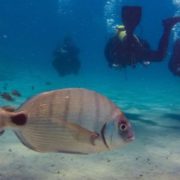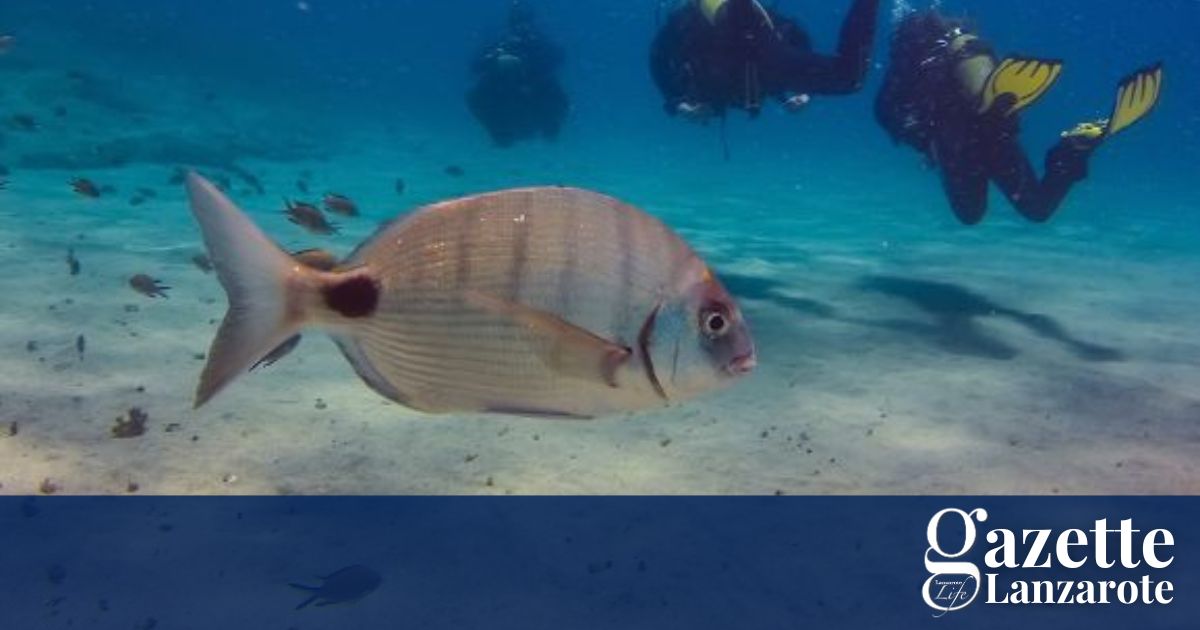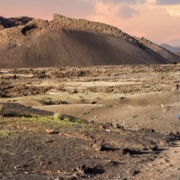The best time to discover some of the amazing creatures that surround the island is in September and October, when the sea is at its warmest. Here is our list of the nine species of fish you’re most likely to find in a Lanzarote lagoon.
Some of the best places to snorkel on Lanzarote are the protected lagoons in the tourist resorts – Playa Jablillo in Costa Teguise, Playa Chica in Puerto del Carmen, and Playa Dorada and Flamingo in Playa Blanca are all good. There are plenty of other places, too, but the lagoons are ideal for beginners.
All you need is a decent dive mask and a snorkel. Avoid the cheap ones at the souvenir shops and ask at dive shops and dive centres instead. Full-face masks are all the rage right now but are not as versatile as the old mask and tube combination.
Don’t forget to stay safe – take a partner or let someone know where you are, and watch out for boats, jet skis and other craft. The only sea creatures that may harm you are jellyfish, which only arrive here rarely. Most of the year you’ll never see one.
What you may see are turtles, sea bass, albacore tuna, stingrays, eagle rays, torpedo rays, barracuda, angel sharks, triggerfish, pipefish, octopuses, butterfly cone shells, groupers, moray eels, spider crabs, massive anchovy shoals and dozens of other species.
ORNATE WRASSE (PEZ VERDE)
This brightly coloured little fish can be seen almost everywhere darting around rocks. Most are females, but keep your eyes out for the larger, differently coloured male fish. Strangely, these fish actually lie down on their sides for a sleep at night.

BLUE DAMSELFISH (FULA NEGRA)
Jet black with vivid, electric blue fins, this feisty fish is another common sight around rocks. They’re very territorial, and you’ll often see then squabbling with other fish. Hold your finger out and they might have a peck at it, too.

RED MULLET (SALMONETE)
This mullet is pink, but as red light doesn’t penetrate far under water they usually look grey. Usually seen on sandy seabeds using their beard-like barbels to sense food, which they then snort up and filter. They’re usually seen in small groups of two to five.

DREAM FISH (SALEMA)
One of several sea bream found around the island, this one stands out for golden stripes on silver background, and its habit of forming large shoals, which graze on rocks like herds of cattle or swirl around over sandy seabeds.

PARROTFISH (VIEJA)
A large fish that is usually seen bustling quickly around rocks and using it’s tough beak and lips to finds bits of food. Females are a brightly coloured red, grey and yellow, while males are a duller green.

CUTTLEFISH (SEPIA)
Often seen on sandy seabeds, where they try and merge into the background, these unmistakeable molluscs will usually start changing colour if you approach them, before shooting off – sometimes leaving a few squirts of ink to distract you.

SEA URCHIN (ERIZO)
There are several species of sea urchin around Lanzarote, and you’ll sometimes see them camouflaging themselves with shells and stones. Keep an eye out for their skeletons, which are green, red, purple, brown and, once in a while, pure white.

PEARLY RAZORFISH (PEJEPEINE)
A beautifully-coloured fish shaped like a machete blade, this likeable fish will turn its body towards you so you don’t see it so clearly. It’s a solitary character, often seen following other sea animals as it waits for a stray scrap of food.

GARFISH (AGUJA)
The long, needle-shaped garfish is one of the strangest fish around Lanzarote. They live in shoals and, unlike other fish, are always seen at surface of the water. Try and chase one and it may disappear before your eyes– in fact, it’s jumped out the water to escape.











